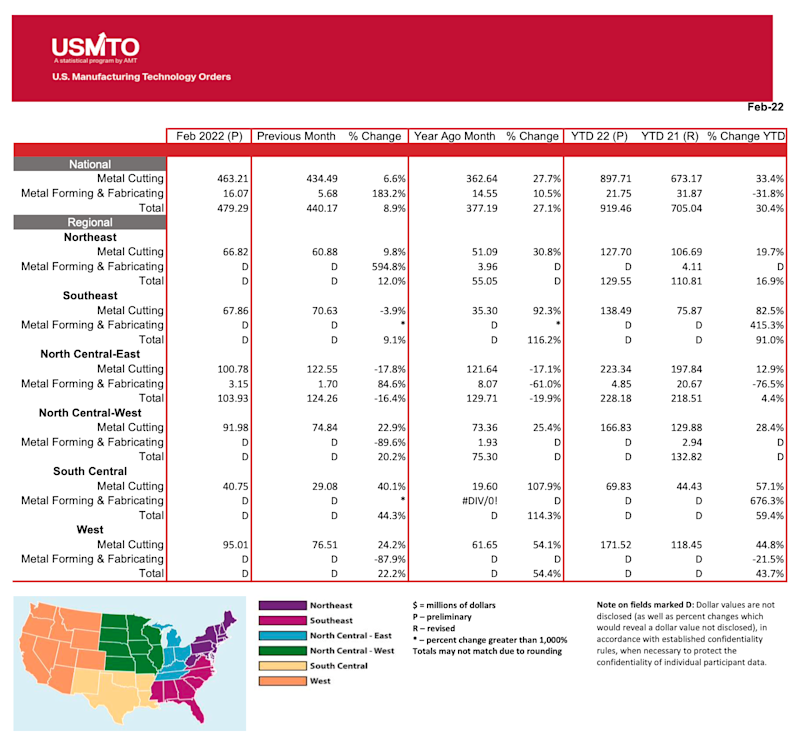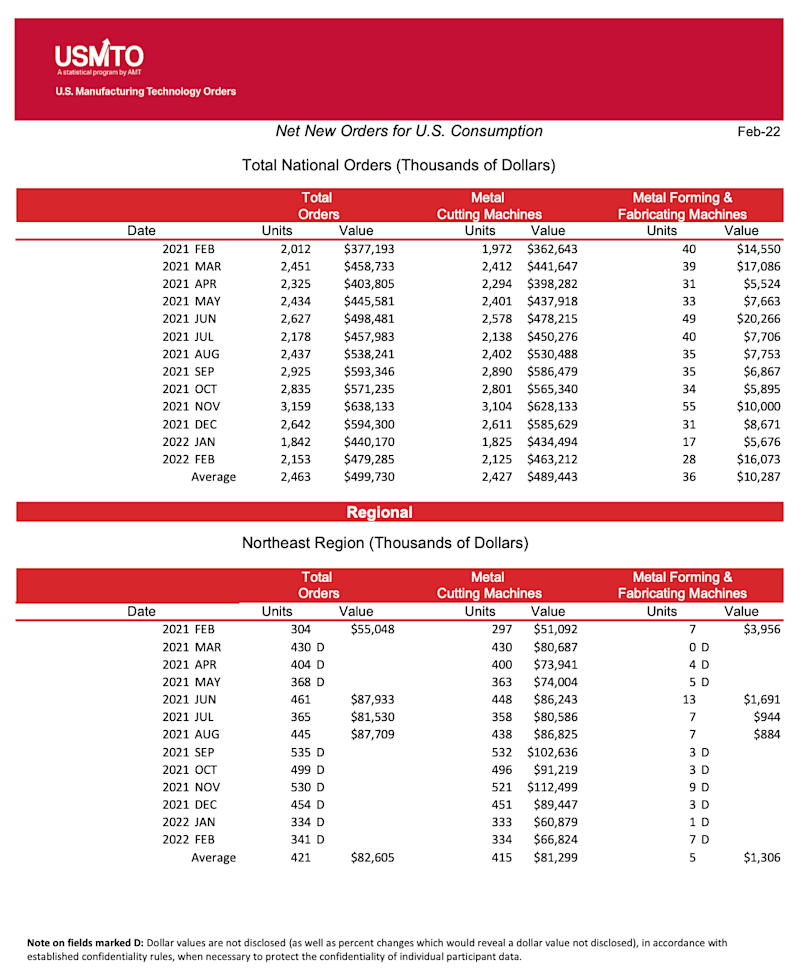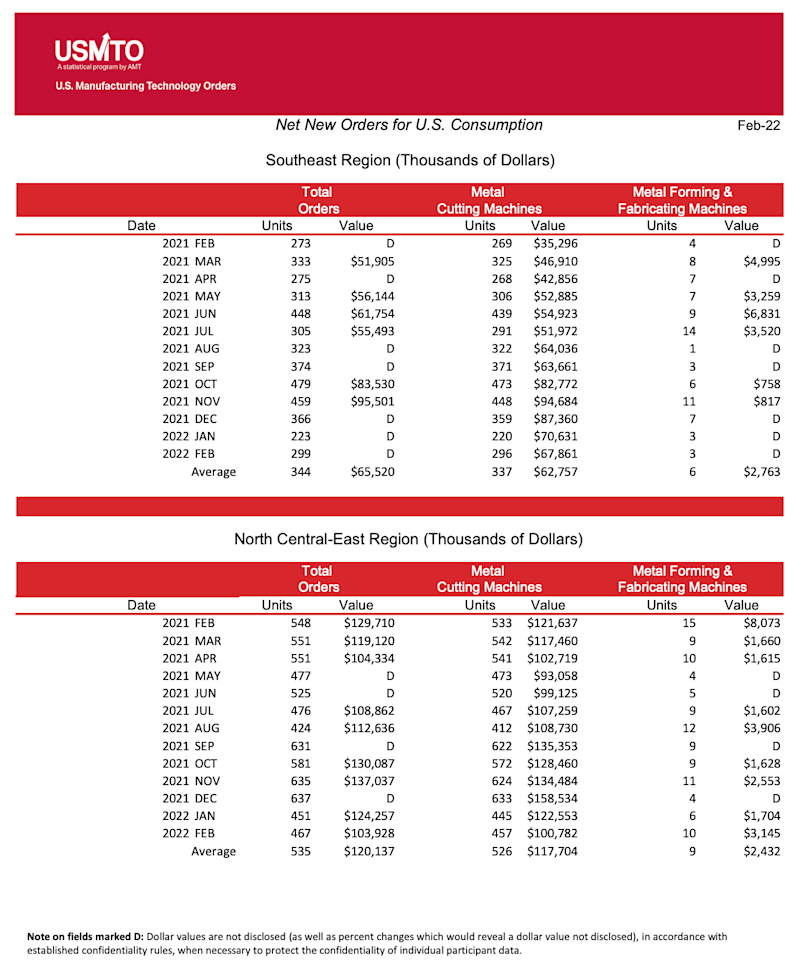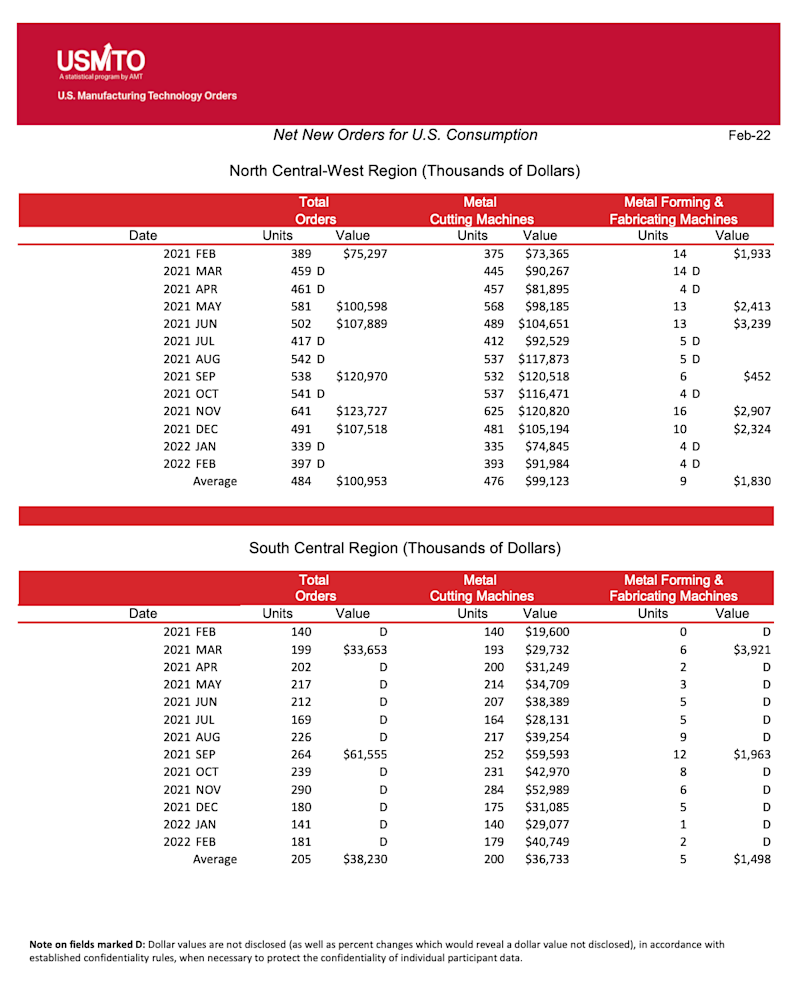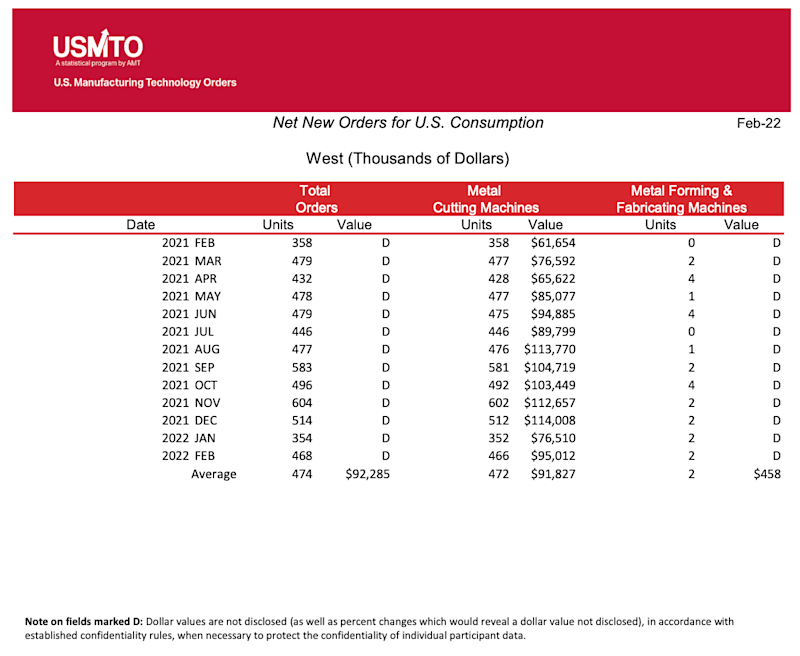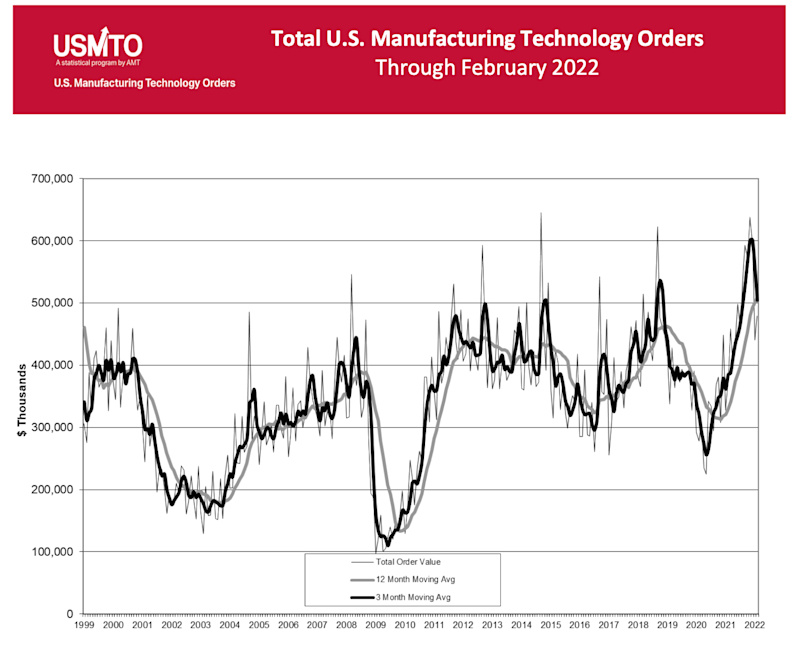Manufacturing technology orders totaled $479.3 million in February 2022 according to the latest U.S. Manufacturing Technology Orders Report published by AMT – The Association For Manufacturing Technology. February 2022 orders were up 9% from January 2022 and up 27% from February 2021. Year-to-date orders are just shy of $920 million, an increase of 30% from the same period in 2021 and only 11% down from the same period in 1998 when orders set a record by surpassing $1 billion in only two months.
“The industry seems to be carrying the momentum of 2021 into the beginning of 2022, recording the best start to the year in over two decades,” said Douglas K. Woods, president of AMT. “As we have learned throughout the last two years and, especially the last few months, conditions can change quickly. We saw this in 2021 when order values during the first few months of the year performed only moderately well, but by the end of 2021, it was the best year on record. This can cut both ways so we may need to temper the early 2022 excitement as conditions on the ground change.”
Strong consumer demand has been a key driving factor behind much of the recent capital investment from manufacturers. “Despite waning consumer sentiment and predictions that spending would soon shift back to services, demand for manufactured products remains at historic levels,” said Woods.
However, several headwinds stand in the way of growth, most notably inflation. Persistent inflation, exacerbated by geopolitical events, threatens to undermine the base of consumer demand that has supported the manufacturing technology industry over the last twelve months.
“Many of the issues such as worker shortages and supply chain troubles we have been highlighting the past few months are still present, but inflation is becoming the biggest threat the manufacturing industry has seen since the initial shutdowns two years ago,” said Woods. “The aggressive posture taken by the Federal Reserve in their last meeting is really telling. Inflation needs to be controlled, but for interest rate-sensitive activities like capital investment, the medicine may be a tough pill to swallow.”
